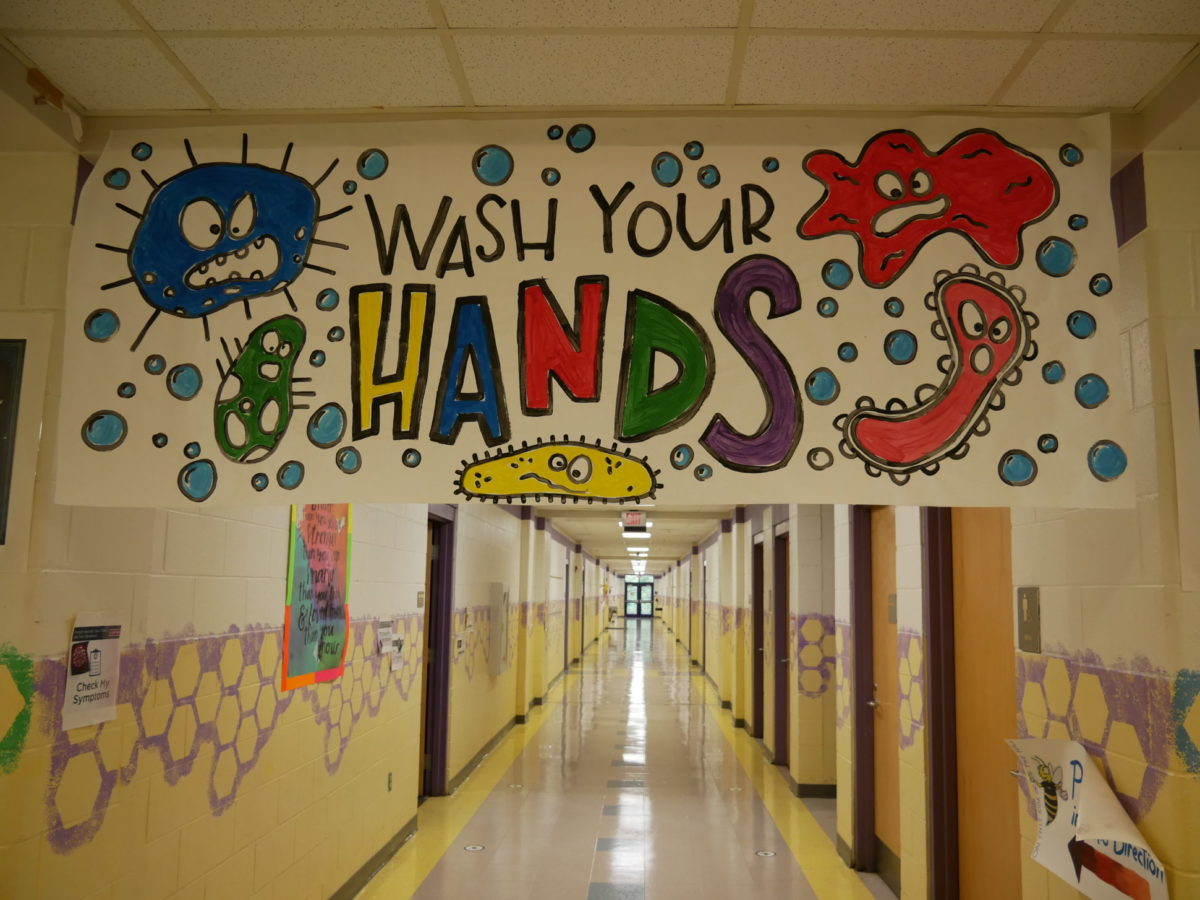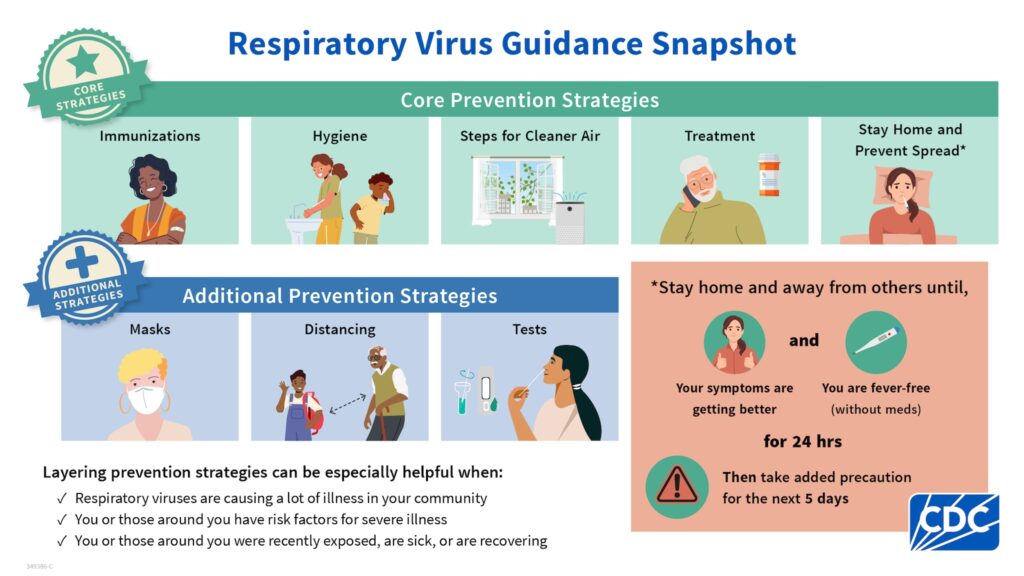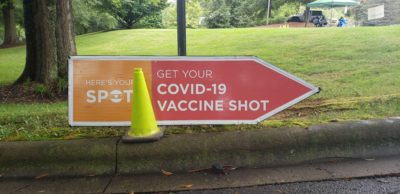
|
|
Contents
In North Carolina, COVID-19 cases are trending upward.
At the same time, schools across the state have started — or are preparing to start — their new school years.
In March, the Center for Disease Prevention and Control (CDC) released updated guidelines to prevent the spread of COVID-19 and other respiratory viruses.
“Each year, respiratory viruses are responsible for millions of illnesses and thousands of hospitalizations and deaths in the United States,” the CDC’s website says. “In addition to the virus that causes COVID-19, there are many other types of respiratory viruses, including flu and respiratory syncytial virus (RSV). The good news is there are actions you can take to help protect yourself and others from health risks caused by respiratory viruses.”
In May, the CDC also released updated guidelines on preventing the spread of COVID in schools, in alignment with the respiratory guidelines.
“CDC has updated actions schools can take to prevent germs from spreading and keep kids healthy and learning,” CDC Director Dr. Mandy Cohen said at the time. “This update puts lessons learned into actionable steps schools can follow to keep our kids, teachers, and school staff safe.”
Take a look at the updated guidance below.
For preventing illness
Part of the CDC’s updated guidance includes recommendations for strategies to prevent respiratory illnesses:
- Staying up to date with vaccinations to protect people against serious illness, hospitalization, and death. This includes flu, COVID-19, and RSV if eligible.
- Practicing good hygiene by covering coughs and sneezes, washing or sanitizing hands often, and cleaning frequently touched surfaces.
- Taking steps for cleaner air, such as bringing in more fresh outside air, purifying indoor air, or gathering outdoors.
“We still must use the common sense solutions we know work to protect ourselves and others from serious illness from respiratory viruses — this includes vaccination, treatment, and staying home when we get sick,” Cohen said.

For exposures
The new guidance does not offer specific guidelines on what to do if you are exposed to someone who tests positive for COVID-19 or another respiratory virus.
However, the CDC lists the following prevention strategies on its website, in addition to the ones above:
- Wearing a mask and putting distance between yourself and others can help lower the risk of COVID-19 transmission.
- Testing for COVID-19 can help you decide what to do next, like getting treatment to reduce your risk of severe illness and taking steps to lower your chances of spreading COVID-19 to others.
For those infected
The CDC says to “stay home and away from others if you have respiratory virus symptoms.” This includes staying away from people you live with who are not sick.
According to the updated guidance, you can go back to your normal activities when, for at least 24 hours, both are true:
- Your symptoms are getting better overall, and
- You have not had a fever (without the use of medication).
However, the CDC says to “take added precaution” for the next five days, including wearing a well-fitting mask, physical distancing, and testing when you will be around other people indoors. Other additional preventative steps include finding cleaner air and practicing good hygiene.
“This is especially important to protect people with factors that increase their risk of severe illness from respiratory viruses,” the CDC’s website says. “Keep in mind that you may still be able to spread the virus that made you sick, even if you are feeling better. You are likely to be less contagious at this time, depending on factors like how long you were sick or how sick you were.”
If you develop a fever or you start to feel worse after you have gone back to normal activities, stay home and away from others again until, for at least 24 hours, both are true: your symptoms are improving overall, and you have not had a fever (and are not using fever-reducing medication). Then take added precaution for the next 5 days.
The CDC’s website.
If you never had symptoms, but tested positive for a respiratory virus, the CDC recommends taking the same steps of caution for five days.
“For COVID-19, taking an antigen test can help you know how likely you are to spread the virus. A positive test tends to mean it is more likely that you can spread the virus to others,” the website says.
You can read the full guidance on the CDC’s website and answers to frequently asked questions here.
Guidance for schools
This is the guidance the CDC published in May for schools regarding prevention and hygiene:
- Take steps for cleaner air by increasing airflow, cleaning the air, or moving gatherings outdoors. This includes ensuring existing HVAC systems provide the minimum outdoor air ventilation, opening windows, and using portable air cleaners, among other things.
- Follow procedures for routine cleaning, sanitizing, and disinfecting. Typically, this means daily cleaning and sanitizing surfaces and objects that are touched often.
- Teaching and reinforcing proper handwashing.
- Teach and reinforce respiratory etiquette, and locate tissues in areas convenient for easy student access.
- Provide information about recommended vaccines to staff, students, and families, and consider making vaccinations available on-site.
The CDC also released the following tips for schools regarding infections:
- Advise students and staff to stay home if they are sick, especially if they have fever or respiratory virus symptoms.
- Use personal protective equipment (PPE) when caring for sick children.
- Consider adding additional strategies during “times of elevated illness activity:” masking and respiratory protection, increasing distance and cohorting, illness monitoring, testing, and managing exposure.
Core infection prevention strategies are important strategies for schools to use every day. For additional strategies, schools, with help from local health departments, should consider local context when selecting strategies to prioritize for implementation of additional infectious disease prevention strategies. Schools need to balance the risk of infectious disease spread with educational, social, and mental health outcomes when deciding which prevention strategies to put in place. Care can be taken so that decisions related to layered prevention strategies and learning options do not disproportionately affect any group of people or worsen health and education disparities.
CDC guidance for schools
“Schools provide safe, supportive environments, routines, and important services that support student health and well-being,” the CDC’s website says. “Schools should have plans in place that can help reduce illness and illness-related absenteeism by preventing the spread of common infections. This guidance is designed to maximize school attendance and its benefits for all students, while also preventing the spread of infectious diseases.”
You can read the full guidance for school’s on the CDC’s website, and a fact sheet for parents and guardians here.



